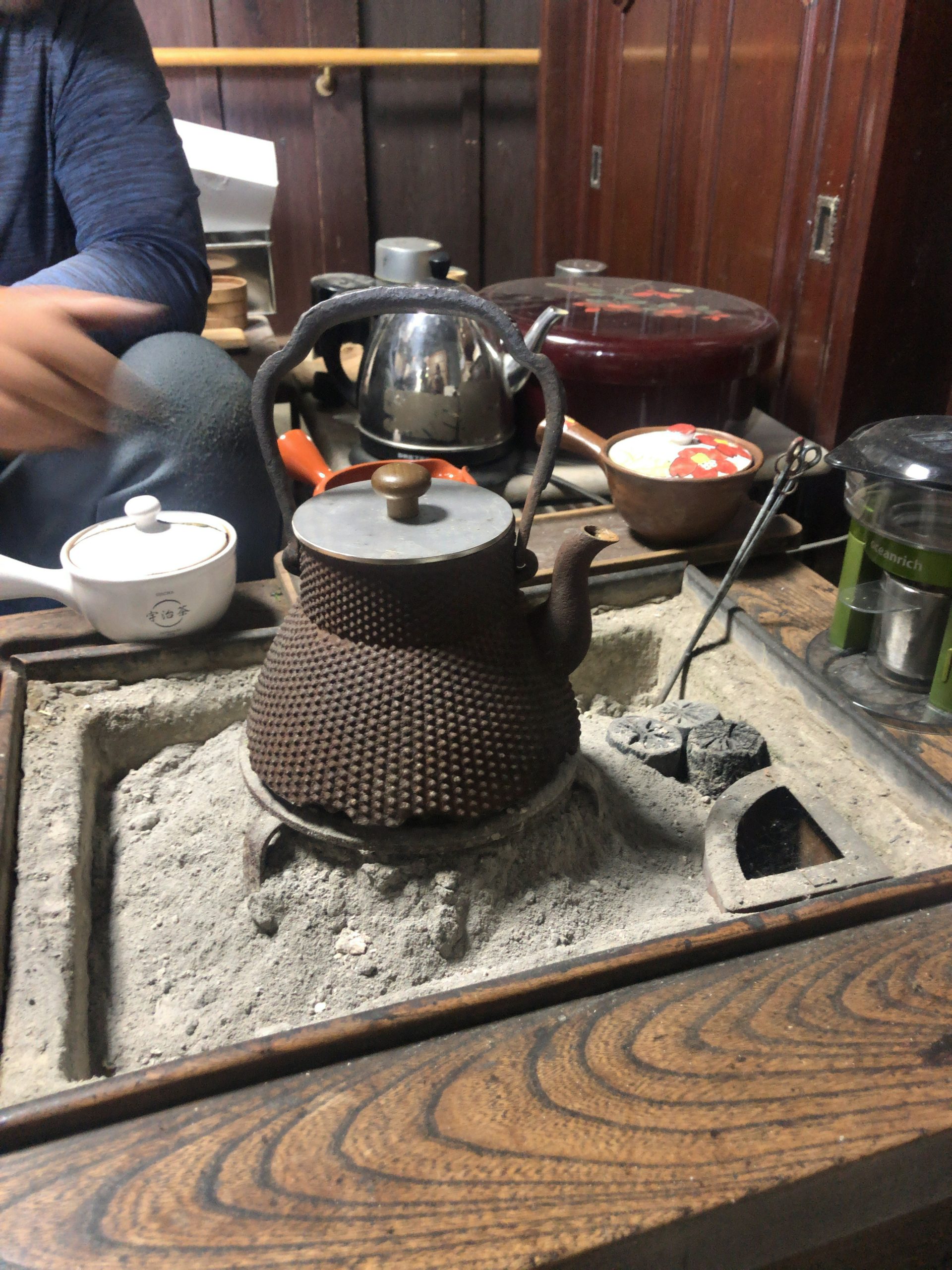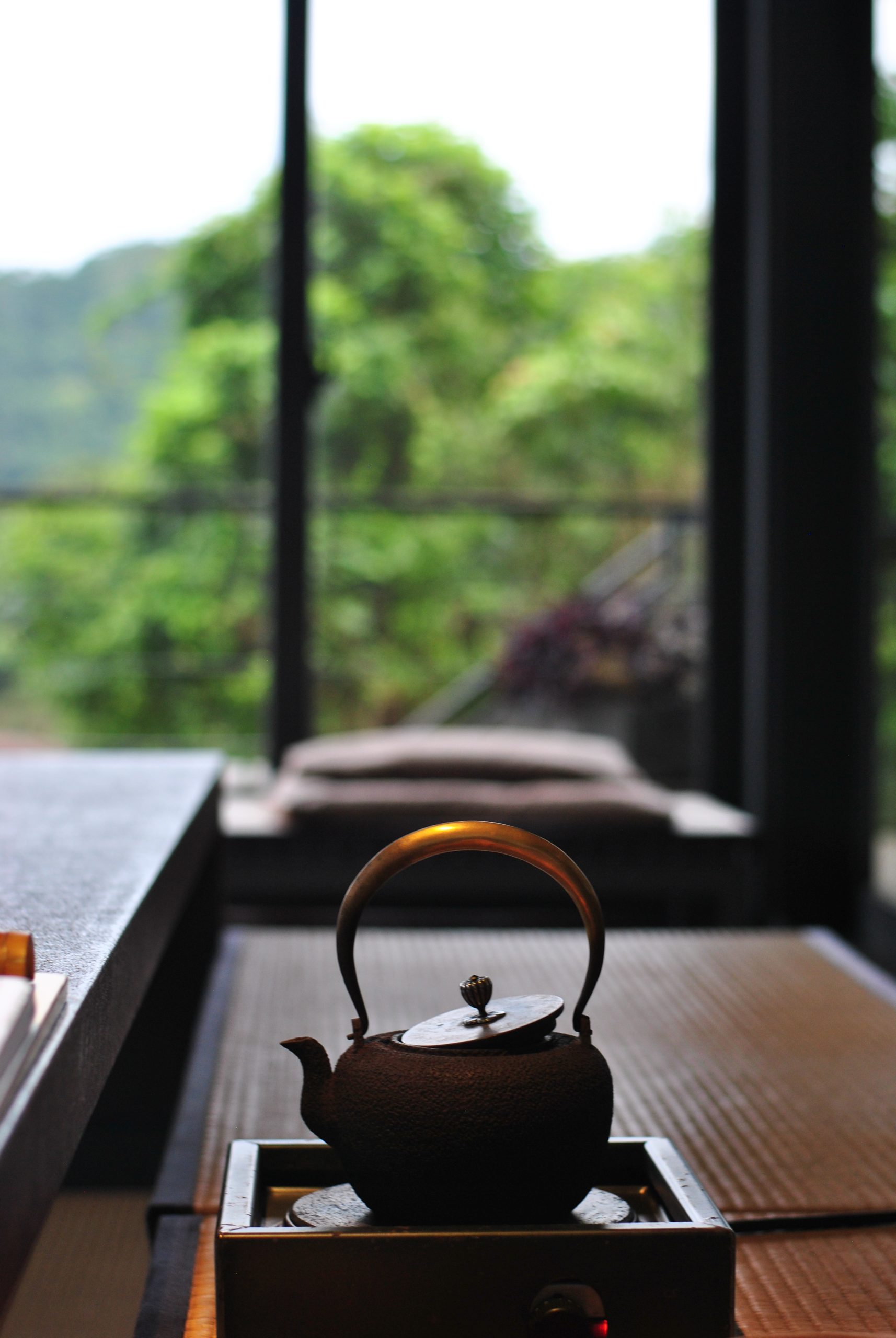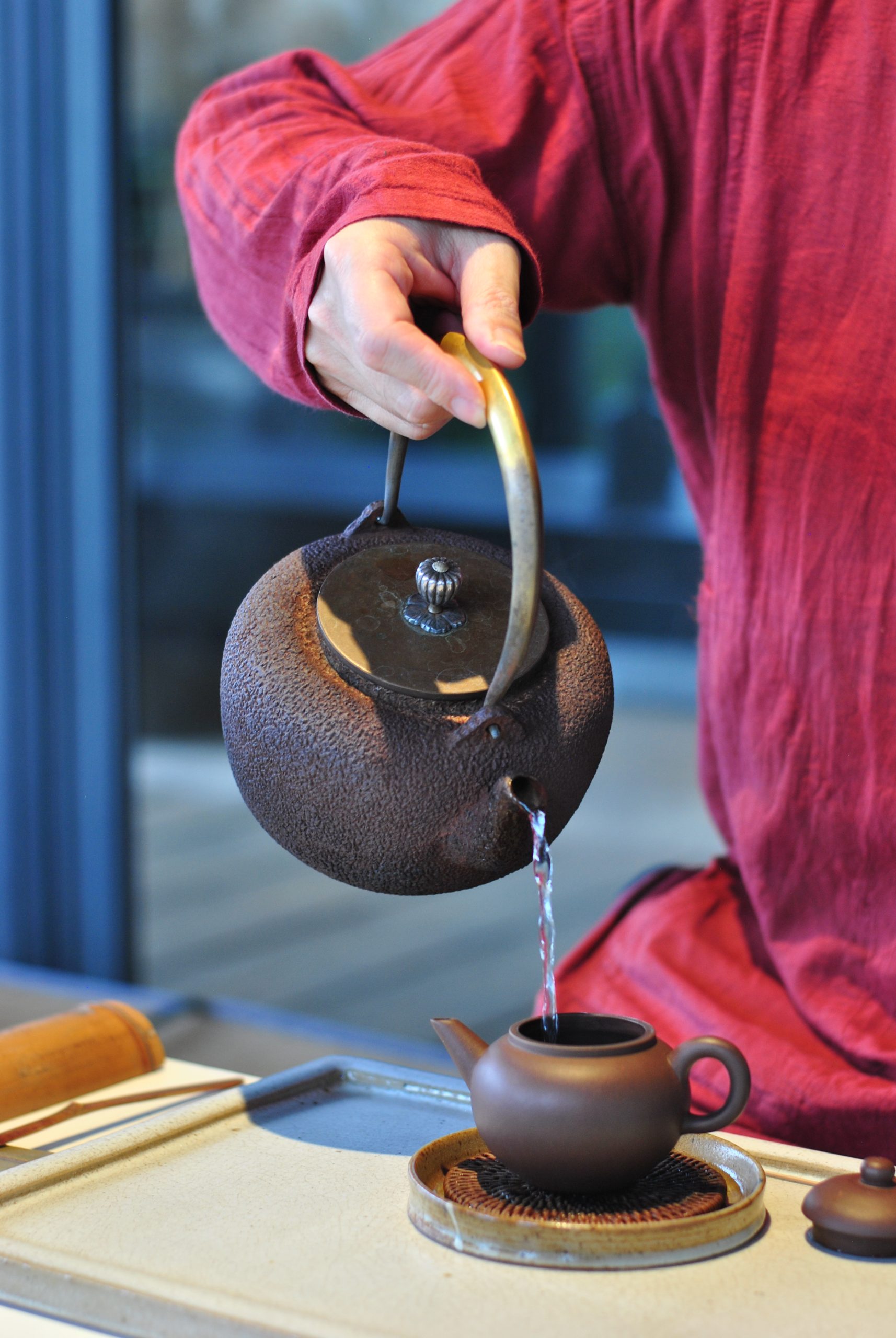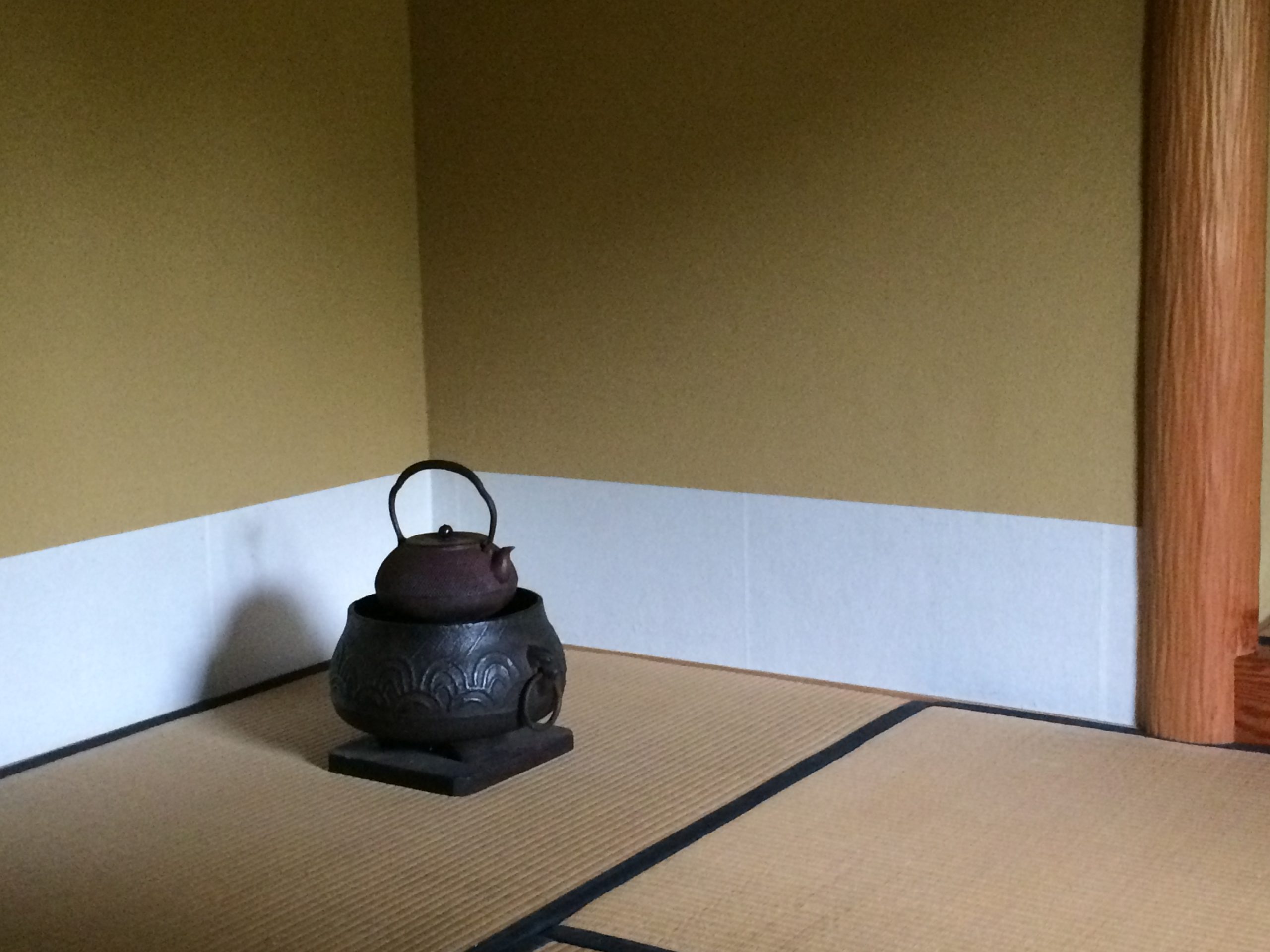Tetsubin – literally “iron pot” (鉄瓶), is a Japanese cast iron kettle used for boiling water for tea. Their very first appearance is not entirely clear, although it is attributed to craftsman Koizumi Nizaemon. While in the family records the invention of tetsubin is not documented, historical Japanese tea records and archives attribute to him the development of this specific kettle during the first half of the 18th century.
Traditionally, big iron cauldrons called chagama, had already been used for boiling water – not only for tea, but also for different uses in Japanese kitchens. At Koizumi’s time, tea practitioners had already started to use something more practical and portable than chagama: clay teapots. Maybe also influenced by the Chinese tradition, clay teapots started to spread as a way of boiling water for loose leaf tea. Noticing this, Koizumi decided to try making a new kettle, a fusion between a chagama and a clay teapot: a cast iron pot, shaped similarly to the clay ones. It seems that at the beginning, tetsubins were used by sencha tea practitioners and scholars, and limited to some parts of the country (in particular Kyoto, where senchado was practiced). Then, around 1800, sencha started to be appreciated by a much wider public, at a time when Chinese teaware was not easily available anymore. This made tetsubin more common.
At the beginning of the 20th century is when tetsubin were at their most prolific time. But during WWII a government ban on using iron (or any other metal) for household objects (or any other things that were not firearms) went into place and lasted until 1942. Eventually, only a limited number of tetsubins was allowed to be made to preserve the tradition. After the end of the war the production finally resumed to be again in decline just before 1950s.
The evolution of the tetsubin was inspired by the chagama and other teapots, while the aestetics are thought to be inspired by different kinds of kettles and teapots. We must not confuse it with iron teapots, that are meant to steep tea, not to boil water. Those usually have an enamel coating inside and very often come with a removable filter.

To craft a testsubin, a casting mold for the body is used; while the lid, the spout and the handle are made separately. There are usually two types of casting molds: one made from sand, called Namagata, and the one made from clay, called Yakigata. While namagata molds can be used more than once and therefore are most commonly used for bigger productions, yakigata can be used only once, therefore the kettle is a single unique piece, making it more valuable in terms of price. Once the mold is created, iron is poured inside and once it cools down the cast can be taken off the kettle. After that, the tetsubin is fired at about 800-1000ºC in charcoal fire. This step is said to prevent rust from forming on the kettle. Then the rest of the parts are attached. The handle is also made from iron, while the lid is usually from another material (could be copper, bronze, gold or silver).

An iron kettle keeps the water hot for longer. Also iron was believed to give the water a better taste – hence a higher quality – and was thought to be a better choice for brewing high quality tea. Nowadays, this is still the opinion of many tea masters and connoisseurs in Japan, but also abroad.

* If you would like to learn more in depth about tetsubin, we can recommend the October 2019 issue of Global Tea Hut magazine. Very good and reliable source in English, that was entirely focused on the Japanese iron kettle.

